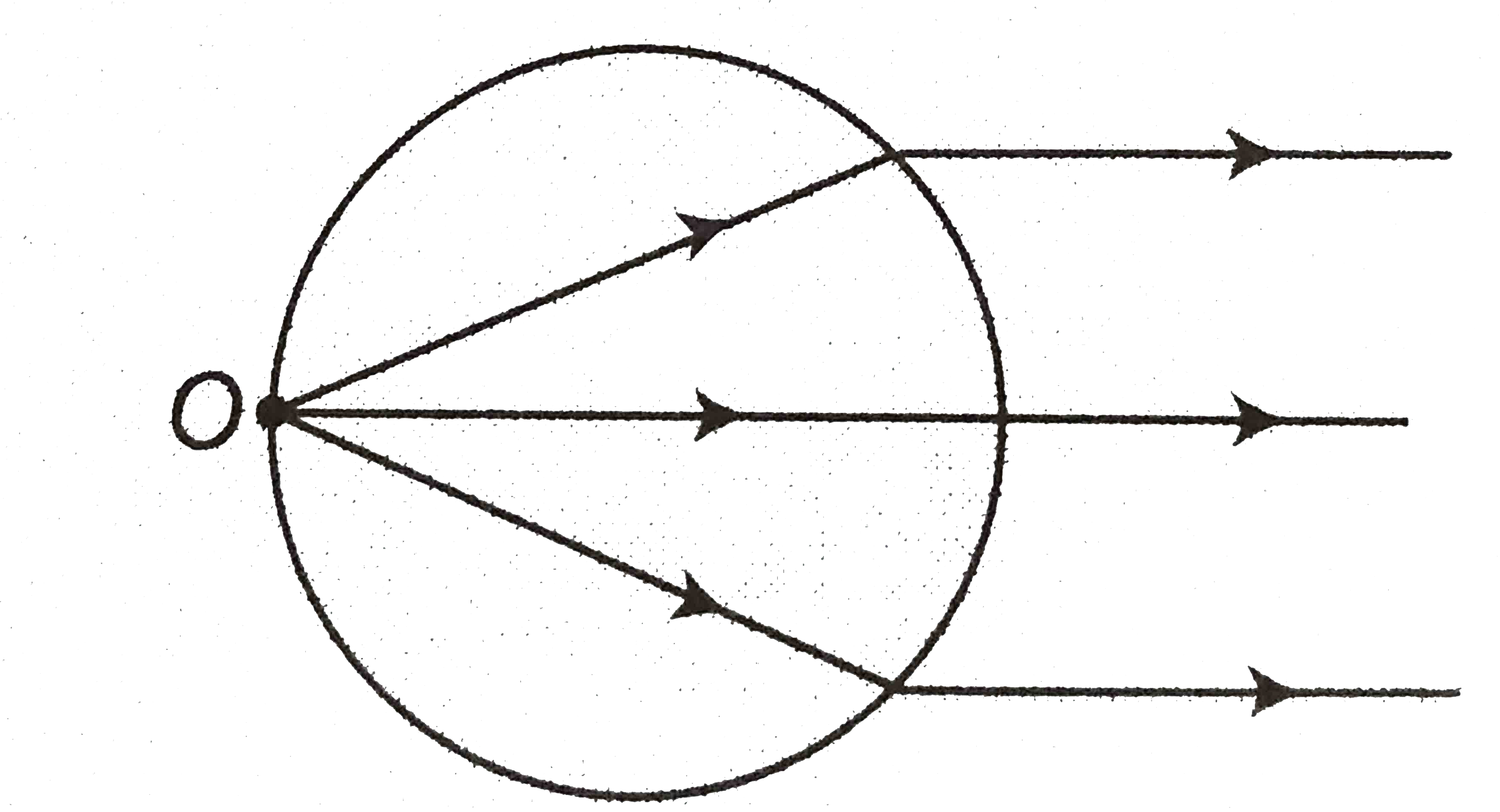A parallel beam of monochromatic light is incident at one surface of a equilateral prism. Angle of incidence is 55∘ and angle of emergence is 46∘. The angle of minimum deviation will be
41∘
<41∘
>47∘
>41∘
The correct Answer is:B
A=60∘,i=55∘,i′=45∘
δ=(i+i′)−A=(55+46)−60=41∘
δm<δ i.e. δm<41∘
Topper's Solved these Questions
- REFRACTION OF LIGHT BY PLANE SURFACESBook:CP SINGHChapter:REFRACTION OF LIGHT BY PLANE SURFACESExercise:Exercises
Explore 110 Videos
- REFRACTION AT SPHERICAL SURFACESBook:CP SINGHChapter:REFRACTION AT SPHERICAL SURFACESExercise:EXERCISES
Explore 105 Videos
- SEMICONDUCTORSBook:CP SINGHChapter:SEMICONDUCTORSExercise:Exercises
Explore 140 Videos
Similar Questions
When light moves from one medium to another
(i) the frequency of light remains same and wavelength changes
(ii) refractive index of a medium is the ratio of speed of light in vacuum and speed of light in medium
(iii) refractive index of a medium is the ratio of wavelength of light in vacuum and wavelength in medium
(iv) for denser medium, the value of refractive index is larger
View Solution
An object O is stuck on the surface of a transparent solid spher of radius 20 cm. Find refractive index of the sphere such that rays from the object after refraction from the opposite side emerge as a parallel beam, as shown Also prove that refractive index has the same value in the given situation for any value of radius of sphere.
View SolutionWhich of the followin is correct regarding band theroy of solids?
View SolutionA parallel beam of monochromatic light is incident at one surface of a equilateral prism. Angle of incidence is 55∘ and angle of emergence is 46∘. The angle of minimum deviation will be
View SolutionIf angle of incidence, emergence and deviation are 45∘, 55∘ and 40∘ then the angle of the prism is
View SolutionA beam of monochromatic light is incident at i= 50^(@) on one face of an equilateral prism, the angle of emergence is 40^(@) , then the angle of minimum deviation is :
View SolutionA ray of light passes through the equilateral prism such that angle of incidence is equal to the angle of emergence if the angle of incidence is 45∘. The angle of deviation will be
View SolutionA ray incident a 15^(@) on one refracting surface of a prism of angle 60^(@) , suffers a deviation of 55^(@) . What is the angle of emergence
View SolutionA monochromatic light is incident at a certain angle on an equilateral triamgular prism and suffers minimum deviation . If the refractive index of the material of the prism is √3, them the angle of incidence is :
View Solutionन्यूनतम विचलन अवस्था में एक प्रकाश किरण एक समकोणिक प्रिज़्म पर एक प्रकार आपतित होती है की आपतन कोण, प्रिज़्म कोण का 34 है! न्यूनतम विचलन कोण ज्ञात कीजिए!
View SolutionA light ray of angles of incidence 40∘ emerged from the prism in minimum deviation position. Then what is the angle of incidence on the second surface ?
View SolutionA beam of monochromatic light is incident at an angle of 55∘ on one face of an equilateral prism . The angle of deviation is δ and the angle of emergence is 46∘ . If the angle of minimum deviation (δm) for the same prism is 45∘ , then
View SolutionIn an equilateral triangular prism , the angle of minimum deviation for monochromatic ray of light is 38^(@) . What is corresponding angle of incidence ?
View SolutionA parallel beam of monochromatic light is incident on one surface of an equilateral prism. Angle of incidence is 55^(@) and angle of emergence is 46^(@) . The angle of minimum deviation will be
View Solutionएक एकवर्णीय प्रकाश किसी समबाहु त्रिभुजीय प्रिज्म पर एक निश्चित कोण पर आपतित होता है और उसका न्यूनतम विचलन होता है। यदि प्रिज्म के पदार्थ का अपवर्तनांक √3 हो, तो आपतन कोण है
View SolutionA monochromatic light is incident on as equallateral prism at an angle 30^(@) and emerge at an angle of 75^(@) . What is the angle of deviation produced by the prism?
View Solution
